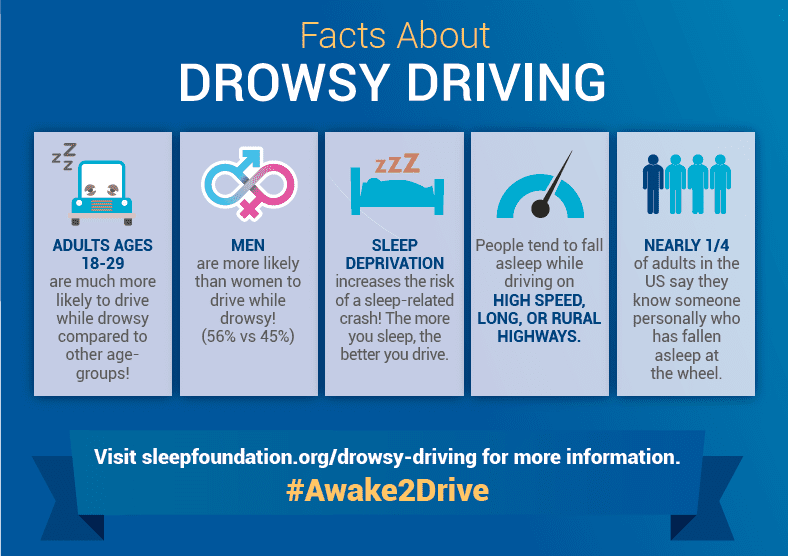The National Sleep Foundation has launched Drowsy Driving Prevention week as an educational campaign designed to save lives by increasing awareness of the dangers of driving while sleepy. The National Highway Traffic Safety Administration estimates that drowsy driving causes at least 100,000 police-reported crashes and kills more than 1,550 Americans each year. It is curious that all states have laws in place to enforce drunken driving but few have laws to cite a driver who has fallen asleep causing an accident. Only the state of New Jersey explicitly defines drowsy driving as recklessness under a vehicular homicide statute. Known as “Maggie’s Law,” New Jersey’s drowsy driving law has served to raise awareness of the consequences of fatigue behind the wheel and has spurred significant action in other states. There are now at least 8 states with 12 pending bills that address fatigued driving in various ways.
For more information on Drowsy Driving Prevention Week, visit http://www2.idealease.com/e/36492/drowsy-driving/5dxclb/598902097

Warning Signs of Drowsiness and Fatigue
If you:
- Can’t remember the last few miles driven,
- Have wandering or disconnected thoughts,
- Experience difficulty focusing or keeping your eyes open,
- Have trouble keeping your head up,
- Drift from lanes or hit a rumble strip,
- Yawn repeatedly,
- Tailgate or miss traffic signs,
- Find yourself jerking your vehicle back into lane….
Then you may be suffering from drowsiness or fatigue.
Continuing to drive in this condition puts you at serious risk of being involved in a fatigue-related crash. You should pull over in a safe place and get some rest before resuming your trip.
What You Can Do to Stay Alert While Driving:
- Sleep / Take Naps: Your best bet is to get enough sleep every day. If you must stay up late, afternoon naps are a great way to get more sleep. If you feel drowsy while driving, a 15-minute nap can be very effective. Make sure to pull over in a safe place.
- Caffeine: Avoid caffeine during the last half of your workday as it may contribute to sleeping problems. You can gain short-term alertness by drinking coffee or other caffeine sources if driving, but it usually takes 30 minutes to take affect and wears off after a few hours.
- Regular Stops: You should stop every 100 miles or 2 hours. Switch drivers if you can.
- AC MAX – Re-circulation: Do not operate the vehicle for extended periods of time with the AC on MAX or Recirculation. Under these conditions the level of C02 in the vehicle is increased contributing to drowsy driving.
- Avoid Alcohol: If you have been drinking, please don’t drive! In addition to being illegal, alcohol makes you sleepy and amplifies your fatigue.
If You are Planning a Long Trip, AAA Offers the Following Tips for avoiding Fatigue:
- Prepare for your trip by getting a good night’s sleep the night before. Plan to drive during the time that you are normally awake, and stay overnight rather than traveling straight through.
- Avoid driving during the body’s “down time”. According to AAA, this is generally in the mid-afternoon and between midnight and 6:00 a.m.
- If you have passengers, talk to them. It will help to keep you alert, and they will also be able to tell if you are showing signs of getting sleepy.
- Schedule a break every 2 hours or every 100 miles. Take a nap, stretch, take a walk and get some exercise before resuming your trip.
- Stop sooner if you show any danger signs of sleepiness.
“Tricks” That Do NOT Work
Opening the window, turning on the air conditioning, or playing loud music are not effective in keeping drivers alert for any extended period of time.
Article originally published in Idealease Safety Bulletin.
